THE PATHÉ VOX 9.5 mm SOUND PROJECTOR
The VOX started is life in 1937 as a silent projector with the simple model designation of Model “S” (for silent?). This machine was basically the VOX without any of the sound parts included. Within a year, Pathé was offering to upgrade the “S” to sound and was offering the complete unit as a Pathé VOX 9.5 mm sound on film projector.
As with a lot of Pathé equipment, the VOX was unconventional. The machine had an off-
The sound system was yet another unusual setup. The light from the projection lamp was focused as a narrow slit onto the sound track by the exciter lens. Once the light passed through the sound track, the resultant varying light intensity was reflected by a small mirror up to the photocell which protruded from the amplifier compartment.
There is no volume control in the conventional sense on the machine, instead there is a rotary shutter covering the photo cell which can be rotated to allow more or less of the reflected sound track light to get to the photocell. (A system that Pathé again used on their 17.5 mm Home Talkie).
The amplifier is again a bit of a mystery for a French built machine. It uses American metal envelope octal (8 pin) valves of the type commonly used in American war-
Speed change was accomplished by changing a gear at the rear of the machine – the motor being a constant speed synchronous type.
The gate incorporated a slider to mask off the sound track when screening sound films, this results in an almost square image on the screen.
This is no light weight machine; the base and mechanism are solid castings. The whole machine weighs in at almost 25 kg. Pathé also produced a “Super” version of the VOX, which incorporated a 400 watt lamp and a more powerful amplifier.
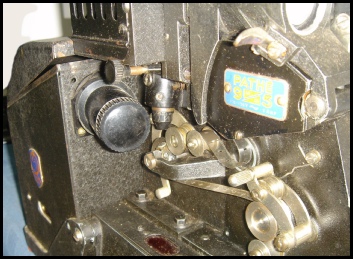

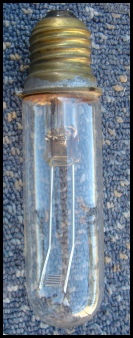
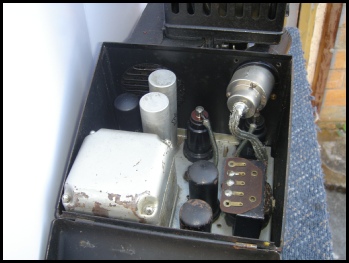
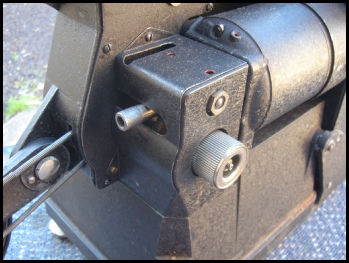

Pathé released their sound films with both variable density and variable area sound tracks. In both cases, Pathé appeared to have a problem in getting the density of the sound track right. The image at left, is an enlargement from one of my films, and is typical. Note the grayness of the sound track in comparison to the black frame bars. The lightness of the sound track results in poor sound level, and a higher degree of noise. (Poor signal to noise ratio). Note also the almost square image.
It was quite some years before Pathé decided to compensate for the loss of image taken up by the sound track. When a sound track was added to 35 mm films in the late 1920s, to retain the academy ratio (1.33:1) the height of the frame was reduced by making the frame bars wider, making the 35 mm frame slightly smaller, keeping the image centralised within the new frame. Not with 9.5 mm, Pathé simply cropped the width of the image and continued for many years with about 20% of the picture on the LH side of the picture cropped off, even on titles.
Pathé 9.5 mm sound films are well sought after by collectors and when in good condition can command good prices.
What is equally well known is that the “quality control” officer at Pathé was frequently absent from the job. With these films, in good condition, now quite hard to find, it is frustrating to find big variations in both image quality and sound quality -
Although the Pathé VOX went into production in 1937 in France, World War 2 intervened and production of these machines ceased in 1940. They were not manufactured after the war, being superceded by the much superior PAX.
References: Home Cinema by Gerald McKee © 2019 Mike Trickett Geelong, Australia
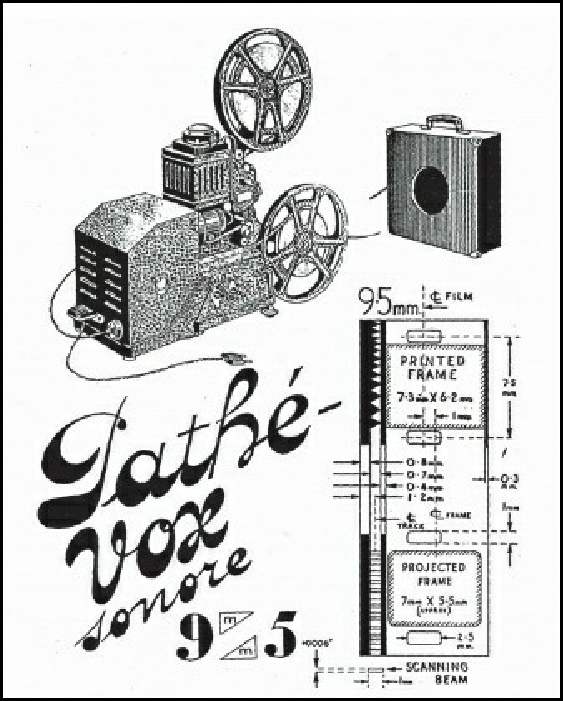
Above: The amplifier section
Above: The motor and the speed selector control
Above: The exciter lens and the rotary shutter (volume control)
Right: Lamp. Note the off-